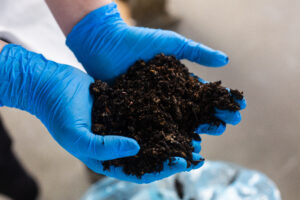Precision Agriculture: the Opportunity to Monitor, Analyze and Control
The global precision farming market is predicted to grow to $10.2 billion by 2025, with a CAGR of 14.2%. This market forecast includes crop management technologies, satellite-assisted farm management and telematics to capture data on the farm. However, the term precision agriculture can also covers automation technology taking in this raw data and making in-farm decisions, according to machine-learned best practices. With this extra layer of farm automation, one could add a $25.2 billion market in 2025. With the increasing deployment of indoor and vertical precision farming systems, you could add another $8 billion market opportunity in 2025. Precision farming, of one kind or another, is therefore $43+ billion market. Here we will focus on the systems that can be used by farmers on existing outdoor crops.
Selling to farmers is difficult for good reasons. Traditionally, technological adoption is slow due to high capital costs, low volumes of available data, low standardization of that data and low rural internet connectivity. Often, the new technology either underestimates the complexity of inputs into farming systems or features sensors which underestimate the harshness of farming environments. To overcome these challenges, x-as-a-service models are increasingly used where the technology provider owns and manages the hardware.
Science-as-a-service for agriculture
A good example is Semios. The company sells to orchards focused on growing apples, pears, cherries, pistachios, almonds, and citrus fruits throughout the West Coast. Currently, it serves over 130,000 acres, up from 5,000 acres in 2015, and aims to double this number year-on-year. Semios owns and manages the hardware, having seen the industry is strewn with competitors selling weather stations and other hardware to customers only to eventually find it stranded in orchards and fields as there is no incentive to fix it. In CEO Michael Gilbert’s words “Selling tech to an industry that is a consumer of science is a disconnect.”
While it is difficult to define the size of the opportunity in precision agriculture tools, as their applications vary by significantly by crop or activity, a rough figure can be calculated from Semios’ business model. The company runs on a fee per-acre per-year model. Their current price range, working in 130,000 acres, is $50 to $250 per acre. On the West Coast USA there are 3 million acres of high value perennial crops, while globally there are 400 million. This give a mid-range estimate of a target addressable market (TAM) of $450 million on the West Coast, but a $60 billion opportunity globally.
Competition
Precision agriculture platforms, such as Trimble’s Connected Farm and Farm Works software or Raven Industries Slingshot telematics service, bring a coordinated set of services to manage the three modes of action in precision agriculture; monitor, analysis, and automation. These industry incumbents will continue to grow their suite of services by acquiring or partnering with start-ups. The most recent examples include:
- Trimble
- Partnership with Digi, a developer of wireless machine-to-machine (M2M) device networking products.
- Partnership with MagGrow, a developer of a precision pesticide sprayer.
- Acquisition of Cityworks, a provider of GIS-centric asset management solutions for water & wastewater, transportation, electric & gas, and parks & recreation sectors.
- Raven Industries
In a precision agriculture industry such as pesticides, a company like Semios offers all three of monitoring, analysis, and control for farming operations, but its differentiator is specialization in pesticide use in high value orchard crops. Every insect uses a unique pheromone for different kinds of communication from threat to mating calls. Much of the work to discover them was done in the 1970s and 1980s, and so much is off-patent, and it’s unlikely companies will be able to protect any IP around the pheromones’ chemistry. The benefit is that most chemical pesticides in agriculture are not discerning, and can kill helpful species of insect, leading some nations, most notably the EU, to ban chemicals such as neonictenoids in 2018. Pheromones are focused only on their target species. The problem is that pheromones degrade more quickly when exposed to heat and light, and therefore need to be applied in a more targeted way as well.
To do this requires a comprehensive view of the orchard. However, at the most crucial times in an orchard’s harvest cycle the trees are thick with leaves and branches, making it almost impossible to communicate wirelessly. Semios’ developed communication technology which can penetrate the canopy and take key in-field measurements in real-time, using 7 separate sensors per acre, allowing the farmer the ability to manage and respond to risks more quickly. This data feeds machine learning processes which improve system efficiency, and Semios is increasingly building in automation not just of its own pheromone-release systems but other farm systems such as irrigation, anti-frost systems, and other hardware. With the as-a-service model in place with the beachhead pesticide product, adding on these layers of monitoring and control is scalable as the farmer gains trust in the system and sees efficiency savings.
Keep an eye out for…
Provivi, a Santa Monica-based provider of innovative biocatalysis and fermentation technology to produce pheromones for use as bio-pesticides, recently raised $85 million from Pontifax AgTech, Tybourne Capital Management, Kairos Ventures, Spruce Capital Partners, Lanx Capital, and BASF Venture Capital. The company plans to use the funding to commercialize a direct-to-farmer product to combat fall armyworm. It currently provides pheromone pest management products to other businesses that serve the orchard industry where the technology has been used for over 30 years in high-value crops like apples and grapes.


